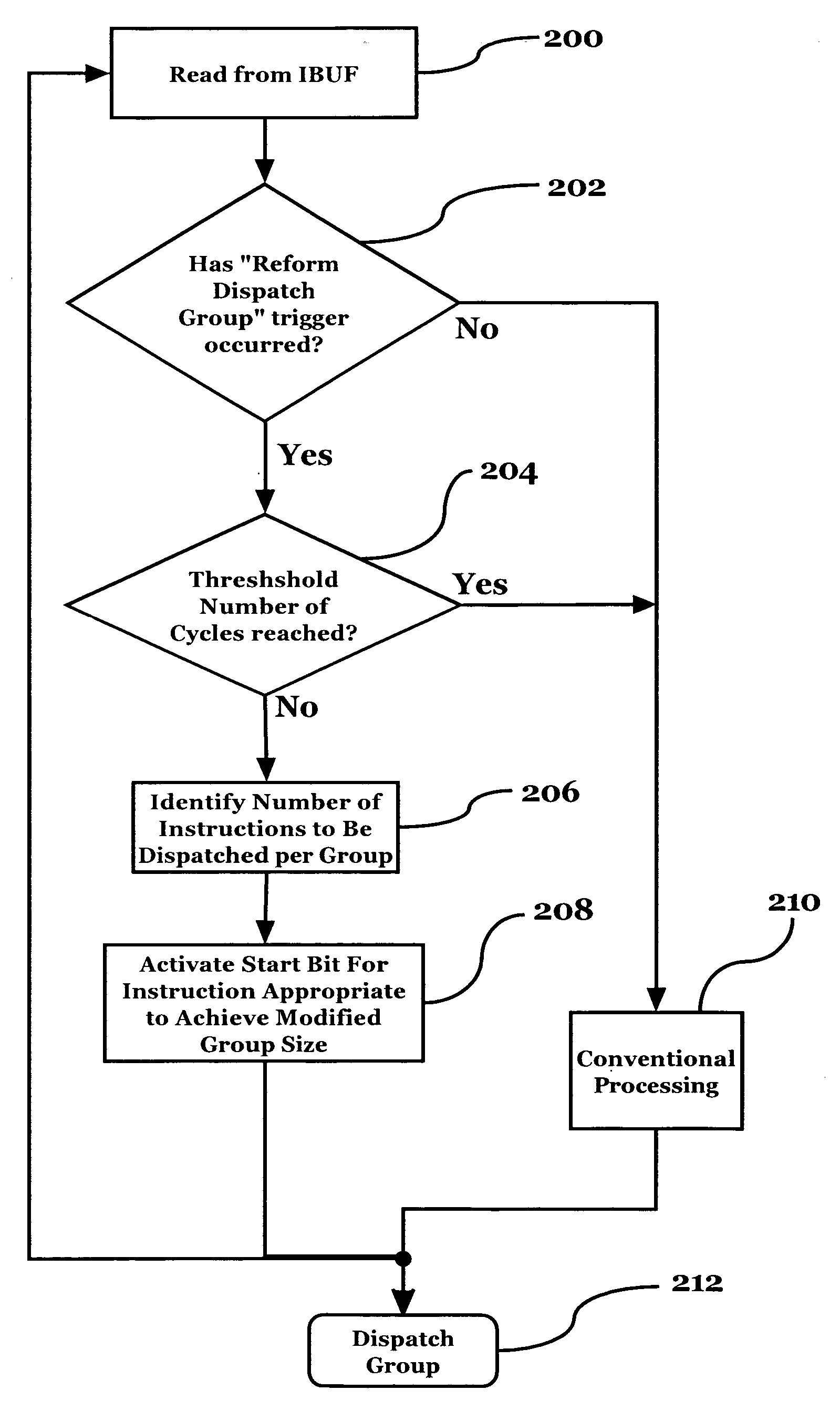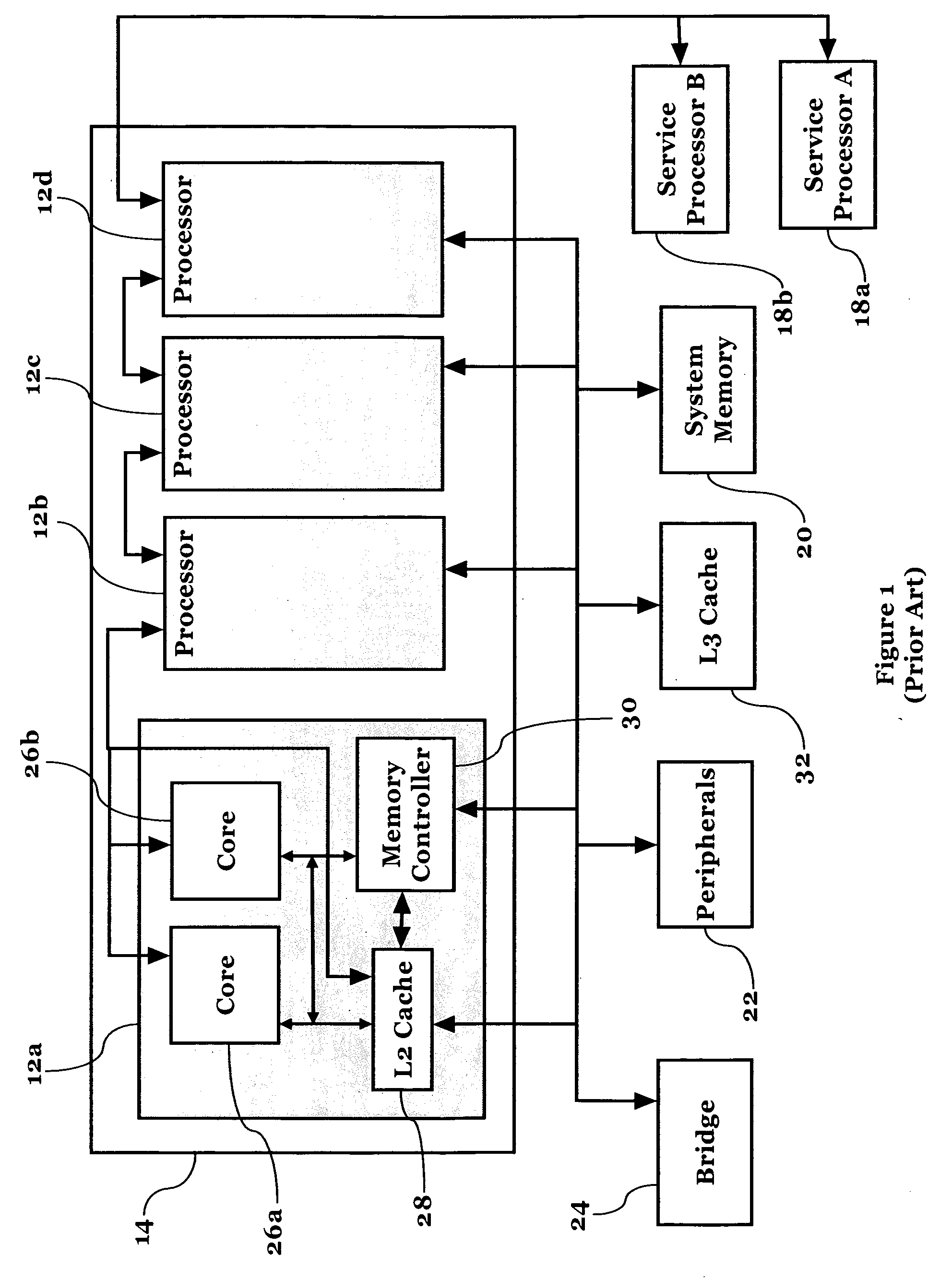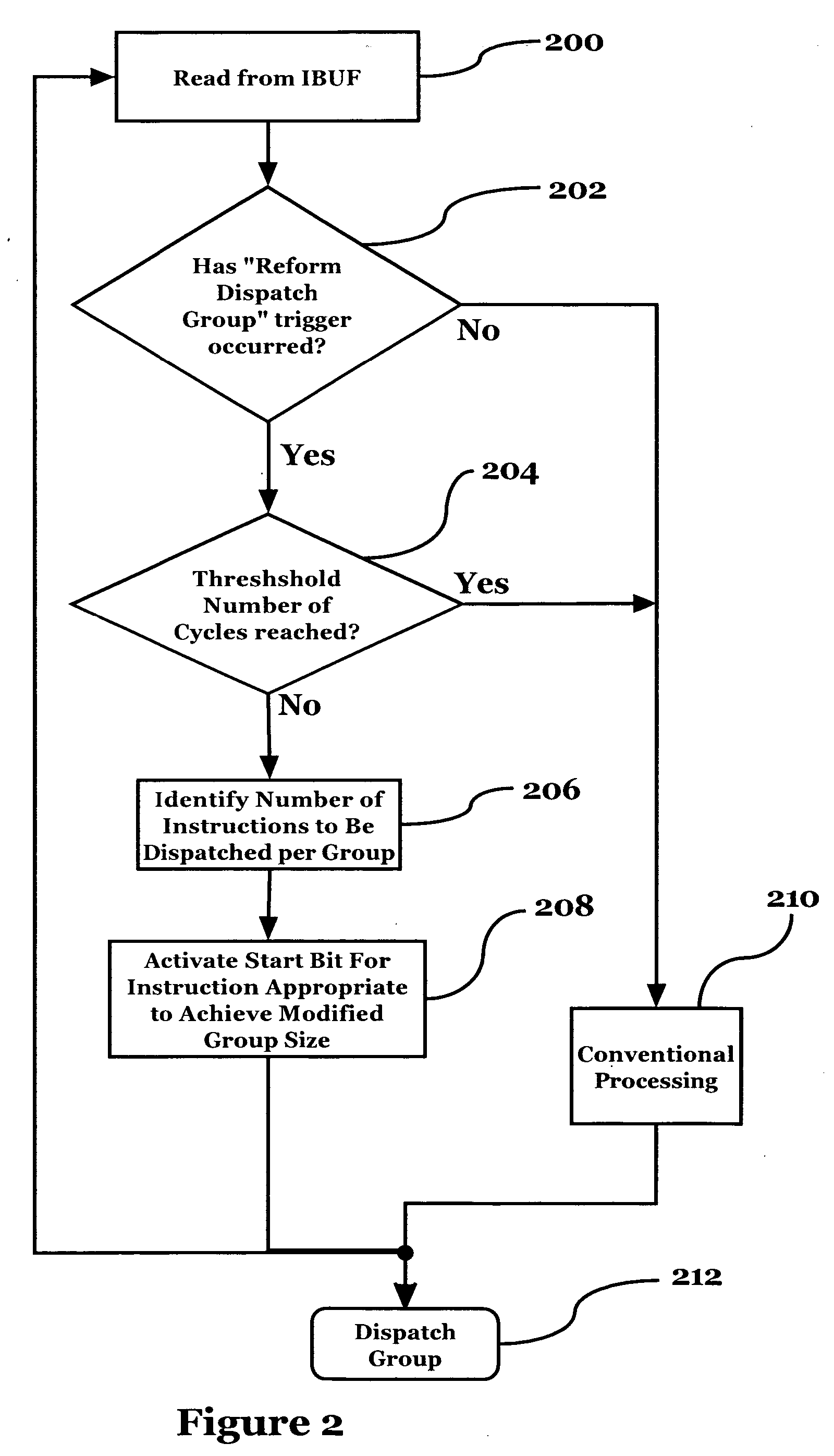Method and apparatus for dynamic modification of microprocessor instruction group at dispatch
a microprocessor and instruction group technology, applied in the field of computer systems, can solve the problems of two threads not being dispatched in the same cycle, per-thread instruction-level parallelism, performance disadvantages of smt processing,
- Summary
- Abstract
- Description
- Claims
- Application Information
AI Technical Summary
Problems solved by technology
Method used
Image
Examples
Embodiment Construction
[0030]FIG. 2 is a flowchart illustrating the general concept of the present invention, in the form of process steps. Referring to FIG. 2, at step 200, the read process for reading the instructions, already grouped using prior art methods, commences. As is known, this begins the dispatching of the instructions according to their groupings, with the groupings being defined by the positioning of the active Start bits.
[0031] At step 202, a determination is made as to whether or not any of the predetermined “reformat dispatch group” triggers have occurred. Described in more detail below, these triggers may include the occurrence of a Load / Store Unit (LSU) reject event; the detection of a particular code stream that indicates the desirability of maximizing throughput; the detection of a thread that is not making forward progress, etc.
[0032] If no trigger has occurred, the process proceeds to step 210, where the dispatch group is processed according to normal procedures, i.e., the dispat...
PUM
 Login to View More
Login to View More Abstract
Description
Claims
Application Information
 Login to View More
Login to View More - R&D
- Intellectual Property
- Life Sciences
- Materials
- Tech Scout
- Unparalleled Data Quality
- Higher Quality Content
- 60% Fewer Hallucinations
Browse by: Latest US Patents, China's latest patents, Technical Efficacy Thesaurus, Application Domain, Technology Topic, Popular Technical Reports.
© 2025 PatSnap. All rights reserved.Legal|Privacy policy|Modern Slavery Act Transparency Statement|Sitemap|About US| Contact US: help@patsnap.com



